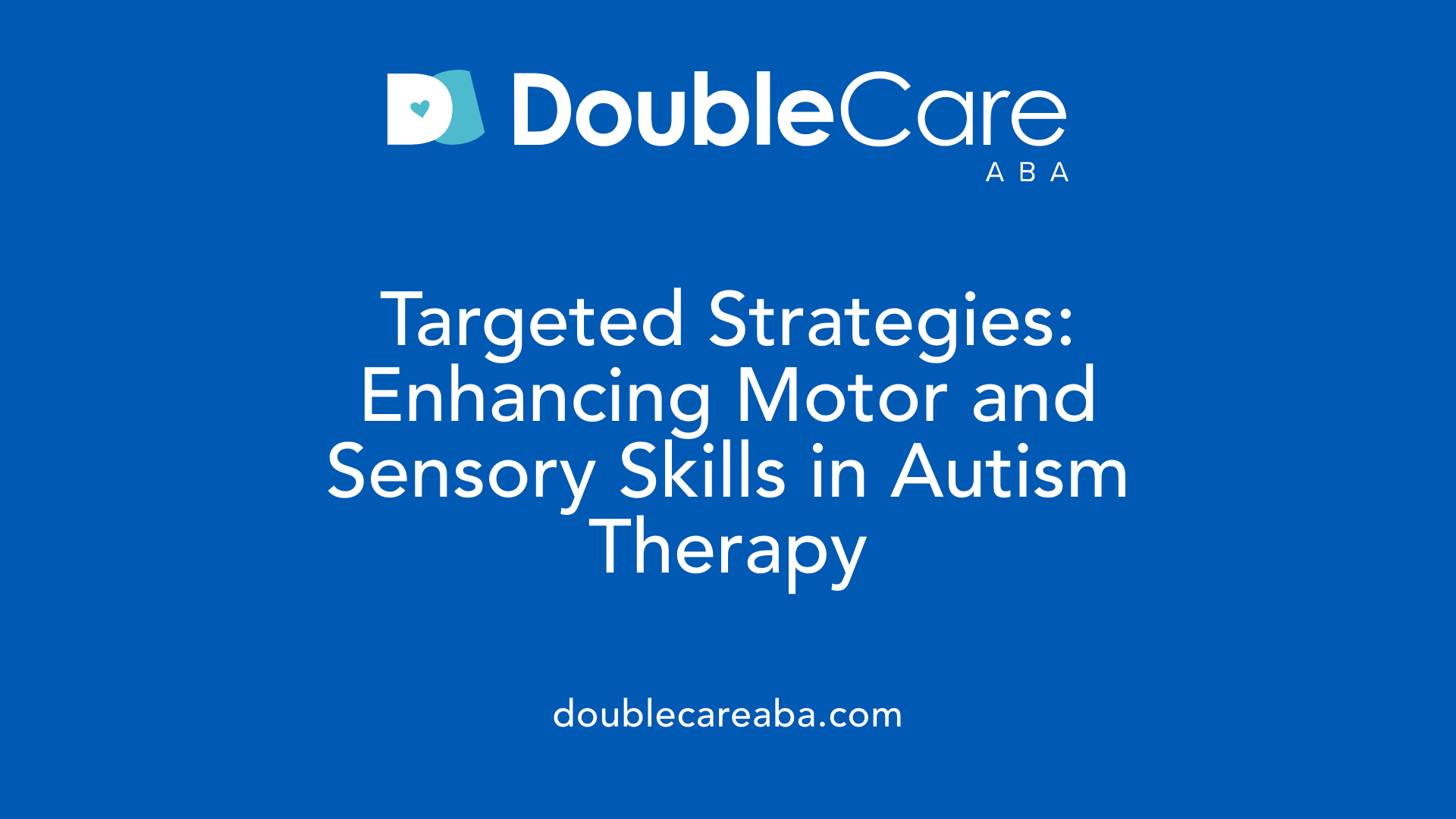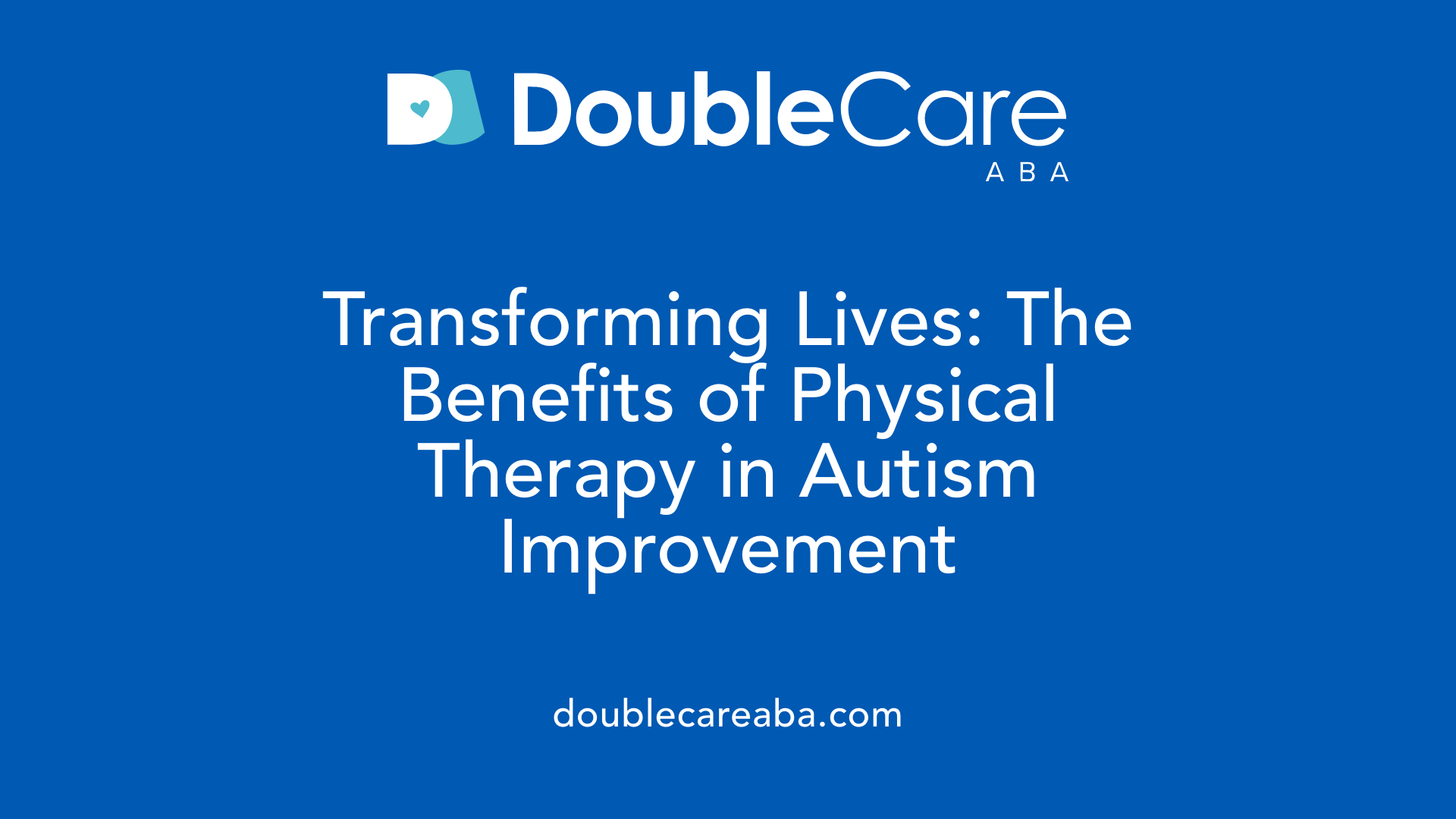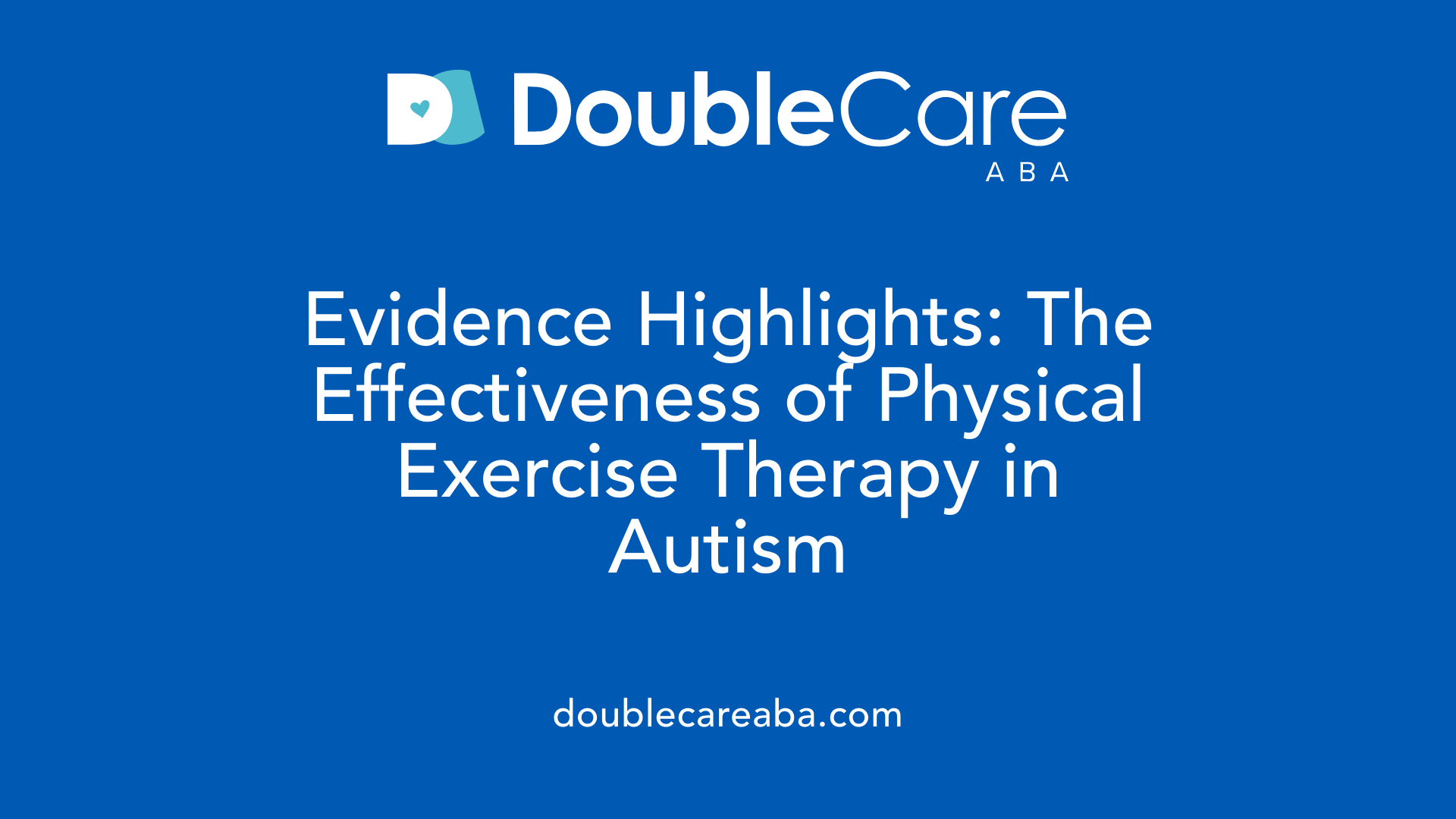Physical Therapy For Autism
Enhancing Lives Through Movement: The Role of Physical Therapy in Autism Support

Understanding Autism Spectrum Disorder and Its Impact on Motor Development
Autism Spectrum Disorder (ASD) is a neurodevelopmental condition characterized by challenges in social communication and the presence of restricted, repetitive behaviors. These symptoms often include difficulty with eye contact, understanding social cues, and forming relationships. Many individuals with ASD also experience sensory sensitivities, emotional regulation difficulties, and co-occurring conditions like hyperactivity or seizures. Early diagnosis and intervention are crucial, as they can significantly improve social skills, communication, and overall functioning. While ASD encompasses a broad range of symptoms and severities, physical development—particularly motor skills—can be profoundly affected, necessitating specialized interventions such as physical therapy to promote optimal growth and independence.
The Essential Role of Physical Therapists in Autism Support

What is the role of physical therapy in supporting individuals with autism spectrum disorder?
Physical therapy is a crucial component in helping individuals with autism spectrum disorder (ASD) improve their movement and physical skills. Physical therapists are movement experts who use hands-on techniques, patient education, and specific exercises to enhance motor abilities.
Children and adults with ASD often experience challenges like low muscle tone, poor balance, and difficulties in coordination. Physical therapy aims to address these issues by developing targeted developmental strategies.
Therapists assess delays in movement such as sitting, standing, walking, and playing. They then create personalized plans to foster progress in these areas, enabling easier participation in daily routines and social activities.
Interventions include activities to build strength, improve posture, boost balance, and refine motor planning. For example, exercises like mirror movements, arm circles, and play-based activities using balls, swings, or slides are common.
Physical therapy supports individuals in reaching motor milestones and encourages physical activity, which positively influences mental health, mood, and sleep patterns.
Support spans all life stages—early childhood, school years, and adulthood—ensuring continuous development and quality of life improvements.
In addition, physiotherapists often guide families on incorporating physical activity into daily routines, promoting independence and social interaction. Collaborating with multidisciplinary teams, they help optimize outcomes for children and adults with ASD.
Although research is ongoing, evidence suggests that physical exercise therapy can significantly reduce core symptoms of autism, such as stereotyped behaviors and social difficulties. Overall, physical therapy plays a vital role in supporting physical development and well-being, helping individuals with ASD lead more active, engaged, and fulfilling lives.
Targeted Interventions: Developing Motor Skills and Sensory Integration

What are the common intervention areas, goals, and methods used in pediatric physical therapy for children with autism?
Physical therapy for children with autism primarily aims to improve movement skills, balance, coordination, and overall physical functioning. By targeting these areas, therapists help children develop independence and participate more fully in daily activities.
Intervention focuses on several core areas:
- Improving gross motor skills like sitting, standing, walking, and running.
- Enhancing balance and coordination to support smoother movements.
- Increasing muscle strength and flexibility, especially in the legs and ankles, to promote better gait.
- Developing functional mobility, including the ability to perform daily routines.
- Addressing sensory processing issues that can impact movement and behavior.
Methods used in therapy are varied and often combined to suit each child's unique needs. Techniques include:
- Motor skills training exercises such as arm circles, bear crawls, and star jumps.
- Sensory integration therapy to help children process sensory input more effectively.
- Play-based activities like football, swings, and slides to encourage movement in an engaging manner.
- Hydrotherapy or aquatherapy, utilizing water's soothing properties to improve range of motion and balance.
- Proprioceptive exercises that involve body awareness to enhance coordination.
These interventions are delivered in diverse settings—home, school, outpatient clinics—and are often tailored through collaborative efforts involving physical therapists, families, teachers, and other healthcare professionals.
Overall, the goal is to improve physical health, promote social participation, and support the child's transition into greater independence and social integration.
Outcomes and Benefits: Improving Quality of Life through Physical Therapy

What are the benefits and expected outcomes of physical therapy for individuals with autism?
Physical therapy provides many positive results for children and adults with autism. It focuses on developing essential motor skills such as sitting, standing, walking, and running. By improving these skills, individuals can gain more independence, making everyday activities easier and more enjoyable.
A major goal of physical therapy is to enhance coordination, balance, strength, and posture. Many children with autism face challenges in these areas, which can impact their ability to participate in play, social interactions, and routines.
Beyond motor development, physical therapy also works on sensory processing. Techniques like sensory integration and aquatherapy help children manage sensory inputs better, leading to less stress and more relaxation.
Engaging in targeted exercises can boost confidence and social skills. Physical activity often results in improved mood and behavior, contributing to overall emotional well-being.
In addition, physical therapy supports physical fitness, which can further encourage positive behaviors and reduce anxiety. When therapy is tailored to each person’s specific needs, it promotes not just physical development but also social and emotional growth.
Overall, the expected outcomes include improved motor coordination, enhanced sensory regulation, greater participation in social activities, and a better quality of life. These benefits extend across all age groups, helping individuals with autism lead more active, confident, and fulfilling lives.
Scientific Evidence Supporting Physical Therapy in Autism
 Research studies, systematic reviews, and meta-analyses highlight the potential benefits of physical therapy for individuals with autism spectrum disorder (ASD). A notable systematic review and meta-analysis examined 28 randomized controlled trials involving over 1,000 participants. These studies found that physical exercise therapy (PET) could significantly improve core symptoms of autism, including motor performance, stereotyped behaviors, and social functioning.
Research studies, systematic reviews, and meta-analyses highlight the potential benefits of physical therapy for individuals with autism spectrum disorder (ASD). A notable systematic review and meta-analysis examined 28 randomized controlled trials involving over 1,000 participants. These studies found that physical exercise therapy (PET) could significantly improve core symptoms of autism, including motor performance, stereotyped behaviors, and social functioning.
In terms of measurable impact, the studies reported large effect sizes: motor performance improved with an SMD of 1.72, stereotyped behaviors decreased (SMD=-0.81), and social deficits lessened (SMD=-0.76). These effects suggest that physical therapy can produce meaningful improvements in physical and social skills, which are essential for daily functioning.
Effect sizes are statistical measures that indicate the magnitude of a treatment's impact. The reported improvements in motor skills and reductions in problematic behaviors are not only statistically significant but also clinically relevant. Enhanced motor abilities, such as better balance, coordination, and muscle strength, can facilitate participation in play and social activities, contributing to overall development.
Despite these promising findings, limitations exist. The overall quality of the studies is limited, with many having a high risk of bias. This underscores the need for more rigorous, high-quality research to confirm these benefits and determine optimal treatment protocols.
Importantly, no adverse events related to exercise were reported across the studies, suggesting that physical therapy approaches like PET are safe for children and adults with ASD.
In summary, scientific evidence currently supports physical therapy, especially structured exercise programs, as an effective intervention to improve specific physical and behavioral symptoms in autism. While not a cure, it offers valuable benefits when integrated into comprehensive treatment plans individualized to each person’s needs.
Motor and Sensory Development: The Connection in Autism Intervention

How does physical therapy relate to motor skills development and sensory integration in individuals with autism?
Physical therapy is a vital component in helping individuals with autism improve their motor abilities and process sensory input more effectively. Children with ASD often experience challenges with coordination, balance, and muscle strength, which can affect their ability to perform everyday activities and participate in social interactions.
Through targeted exercises and play-based activities, physical therapy focuses on developing gross motor skills like sitting, standing, and running. These activities not only strengthen muscles but also help improve balance and coordination, enabling children to engage more confidently in play and social situations.
A significant aspect of therapy involves sensory integration — the brain’s ability to organize and interpret sensory information received from the environment. Many children with autism are either under-responsive or over-responsive to sensory stimuli, which can disrupt their daily functioning. Sensory-based activities, such as vestibular movements (e.g., swings) and proprioceptive exercises (e.g., weight-bearing activities), are incorporated into therapy plans.
These techniques help modulate sensory input, promoting better behavioral responses and reducing sensory-related anxiety. Sensory integration therapy, often administered by occupational or physical therapists, aims to enhance the brain’s capacity to process tactile, vestibular, and proprioceptive signals.
Research indicates that structured sensory stimulation activities can lead to improvements in motor proficiency and social responsiveness. For example, using equipment like balls, swings, or water-based activities such as hydrotherapy has shown promising benefits.
By fostering better sensory processing and motor skills, physical therapy not only boosts physical independence but also encourages social participation and emotional regulation. Overall, the integration of motor development and sensory processing strategies in therapy creates a foundation for improved daily functioning and quality of life in children with autism.
Harnessing Movement for Better Outcomes
Physical therapy constitutes a vital component of comprehensive autism treatment, focusing on improving motor skills, sensory processing, and functional independence. Through evidence-based interventions and multidisciplinary collaboration, physical therapists help individuals with ASD achieve better physical health, greater social participation, and an improved quality of life. Continued research and tailored therapy approaches remain essential to maximize these outcomes and support lifelong development.
References
- Physical Therapy Guide to Autism Spectrum Disorder
- Physical Therapy for Autism | NICHD
- The Role of the Pediatric Physical Therapist for Childen on the ...
- The Top 5 Benefits of Physical Therapy for Children with ...
- Autism Spectrum Disorder and Motor Development
- The effect of physical exercise therapy on autism spectrum ...
- Treatment and Intervention for Autism Spectrum Disorder
- The effect of physical exercise therapy on autism spectrum ...













